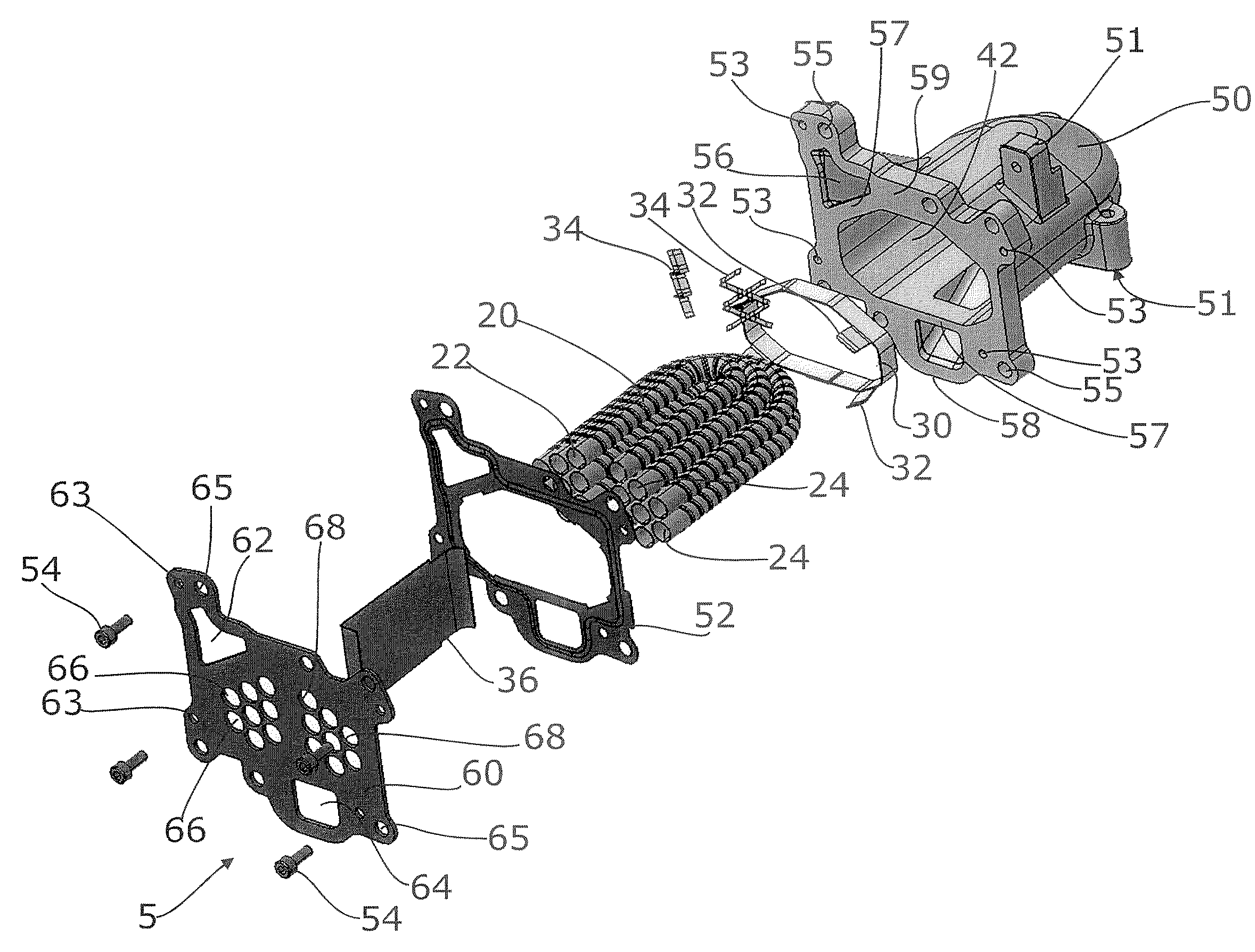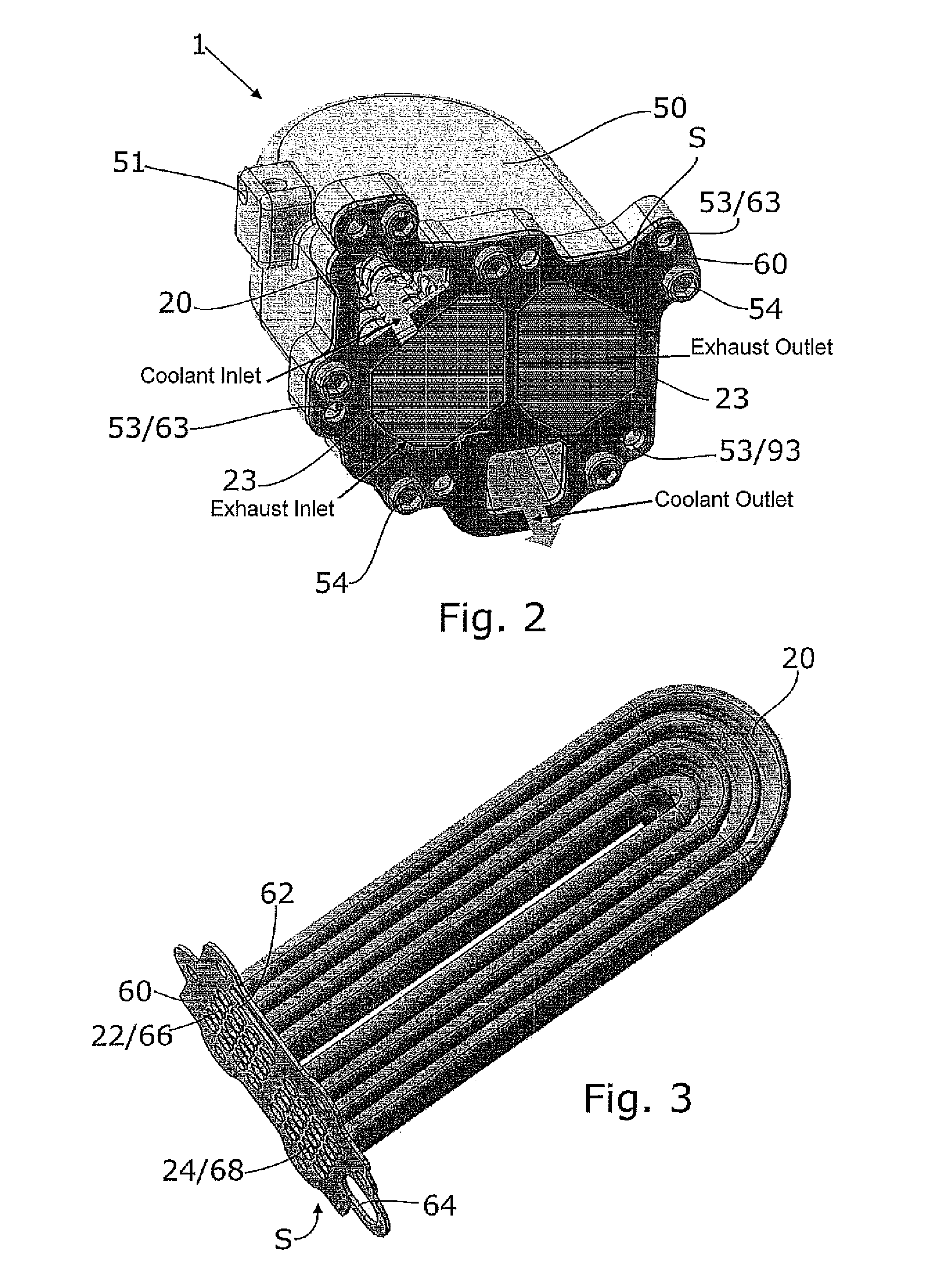Exhaust gas heat exchanger with integrated mounting interface
a heat exchanger and exhaust gas technology, applied in the field of exhaust gas recirculation systems, can solve the problems that the combustion gas cannot be recirculated to the intake side immediately after having left the combustion chamber of the internal combustion engine, and it is difficult if not impossible to design the surface of a metallic cast part as inert comparable with a stainless steel surface, etc., to achieve efficient space occupancy, increase the number of flow cross section constrictions, and improve the effect of manufacturing efficiency
- Summary
- Abstract
- Description
- Claims
- Application Information
AI Technical Summary
Benefits of technology
Problems solved by technology
Method used
Image
Examples
Embodiment Construction
[0038]The following detailed description and appended drawings describe and illustrate various embodiments of the invention. The description and drawings serve to enable one skilled in the art to make and use the invention, and are not intended to limit the scope of the invention in any manner. In respect of the methods disclosed, the steps presented are exemplary in nature, and thus, the order of the steps is not necessary or critical.
[0039]FIG. 1 shows an exploded view of an exhaust gas heat exchanger 1 of the invention according to a first exemplary embodiment. The heat exchanger 1 includes a housing 40 consisting of a housing case 50 closed by means of a housing cover 60. The housing case 50 is configured to be a cast part and may be made from aluminium die casting in particular. Alternatively, the housing case 50 in the exemplary embodiment shown may be made from any material that can be processed by casting on the one side and that has sufficient thermal stability on the other...
PUM
 Login to View More
Login to View More Abstract
Description
Claims
Application Information
 Login to View More
Login to View More - R&D
- Intellectual Property
- Life Sciences
- Materials
- Tech Scout
- Unparalleled Data Quality
- Higher Quality Content
- 60% Fewer Hallucinations
Browse by: Latest US Patents, China's latest patents, Technical Efficacy Thesaurus, Application Domain, Technology Topic, Popular Technical Reports.
© 2025 PatSnap. All rights reserved.Legal|Privacy policy|Modern Slavery Act Transparency Statement|Sitemap|About US| Contact US: help@patsnap.com



